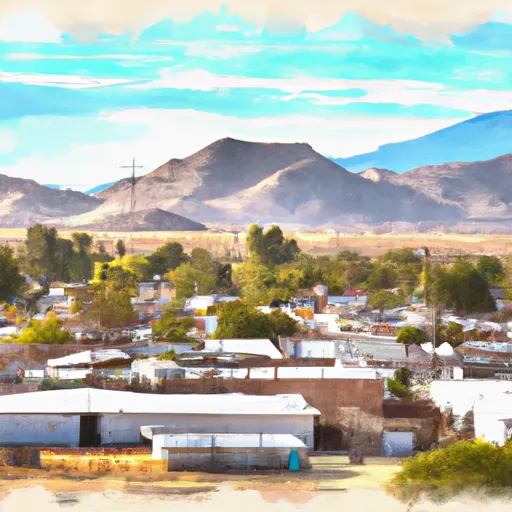-
 Snoflo Premium
Snoflo Premium
Get unlimited access to all our content
With no Ad interruptions! - Start Your Free Trial Login with existing account
Jacumba
Eden Index
Climate
9.0
•
Recreation
2.5
•
Community
•
Safeguard
4.5/10

Jacumba is a small town located in the southeastern region of San Diego County, California. With an elevation of 2,400 feet, Jacumba experiences a semi-arid desert climate. Summers are hot and dry, with average temperatures reaching the mid-90s Fahrenheit, while winters are mild with temperatures ranging from the mid-40s to mid-60s Fahrenheit. Precipitation is scarce, averaging around 7 inches annually.
Hydrologically, Jacumba is situated near the western edge of the Sonoran Desert and is not known for significant water bodies. However, nearby areas like the Jacumba Wilderness offer visitors the opportunity to explore seasonal rivers and ephemeral streams in a desert landscape.
Outdoor recreation in Jacumba is abundant. The Jacumba Hot Springs, renowned for their therapeutic properties, attract visitors seeking relaxation. The nearby In-Ko-Pah Mountains provide opportunities for hiking, wildlife viewing, and exploring scenic desert trails. Mountain bikers can enjoy the challenging terrain, while off-roaders can explore designated areas like the Anza-Borrego Desert State Park. The region's unique geological features, including Jacumba's famous boulder formations, make it an ideal destination for rock climbing and photography enthusiasts. Despite its small size, Jacumba offers a variety of outdoor activities for nature lovers and adventurers alike.
What is the Eden Index?
The Snoflo Eden Index serves as a comprehensive rating system for regions, evaluating their desirability through a holistic assessment of climate health, outdoor recreation opportunities, and natural disaster risk, acknowledging the profound impact of these factors on livability and well-being.
Climate Health Indicator (CHI): 9.0
Jacumba receives approximately
351mm of rain per year,
with humidity levels near 74%
and air temperatures averaging around
15°C.
Jacumba has a plant hardyness factor of
8, meaning
plants and agriculture in this region tend to thrive here all year round.
By considering the ideal temperature range, reliable water supplies, clean air, and stable seasonal rain or snowpacks, the Climate Health Indicator (CHI) underscores the significance of a healthy climate as the foundation for quality living.
A healthy climate is paramount for ensuring a high quality of life and livability in a region, fostering both physical well-being and environmental harmony. This can be characterized by ideal temperatures, reliable access to water supplies, clean air, and consistent seasonal rain or snowpacks.
Weather Forecast
Streamflow Conditions
Salton Sea
Area Rivers
Salton Sea
Snowpack Depths
Salton Sea
Reservoir Storage Capacity
Salton Sea
Groundwater Levels
Recreational Opportunity Index (ROI): 2.5
The Recreational Opportunity Index (ROI) recognizes the value of outdoor recreational options, such as parks, hiking trails, camping sites, and fishing spots, while acknowledging that climate plays a pivotal role in ensuring the comfort and consistency of these experiences.
Access to outdoor recreational opportunities, encompassing activities such as parks, hiking, camping, and fishing, is crucial for overall well-being, and the climate plays a pivotal role in enabling and enhancing these experiences, ensuring that individuals can engage in nature-based activities comfortably and consistently.
Camping Areas
| Campground | Campsites | Reservations | Toilets | Showers | Elevation |
|---|---|---|---|---|---|
| Lark Canyon | 15 | 3,766 ft | |||
| Bow Willow - Anza Borrego State Park | 16 | 931 ft | |||
| Agua Caliente | 141 | 1,311 ft |
Catastrophe Safeguard Index (CSI):
The Catastrophe Safeguard Index (CSI) recognizes that natural disaster risk, encompassing floods, fires, hurricanes, and tornadoes, can drastically affect safety and the overall appeal of an area.
The level of natural disaster risk in a region significantly affects safety and the overall livability, with climate change amplifying these risks by potentially increasing the frequency and intensity of events like floods, fires, hurricanes, and tornadoes, thereby posing substantial challenges to community resilience and well-being.
Community Resilience Indicator (CRI):
The Community Resilience Indicator (CRI) recognizes that education, healthcare, and socioeconomics are crucial to the well-being of a region. The CRI acknowledges the profound impact of these elements on residents' overall quality of life. By evaluating educational resources, healthcare accessibility, and economic inclusivity, the index captures the essential aspects that contribute to a thriving community, fostering resident satisfaction, equity, and social cohesion.

